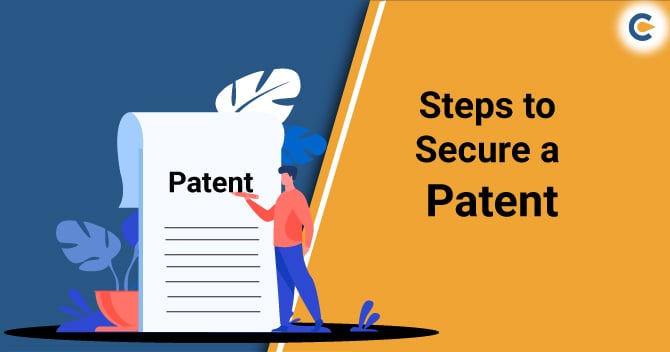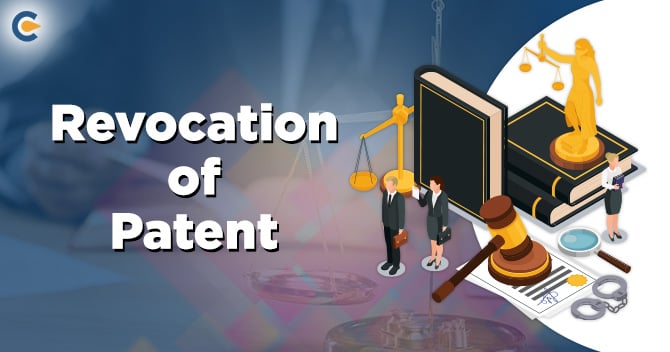Patents, among other intellectual property rights, are one that takes a relatively long time to secure. The first question that comes up to an applicant’s mind before applying for a patent is that how can we secure a patent and the rights of the patentee against the infringement. The process to secure a patent has various time constraints and has deadlines. Hence it is necessary to seek professional help to secure a patent.
Non-Disclosure Agreement to Secure a Patent
It is also essential that the applicant requests a Non-Disclosure agreement (NDA) prior to engaging with any firm in order to secure and protect their invention before disclosing it. Once the applicant has proceeded with the selection of a firm and have signed the Non-Disclosure agreement (NDA), the next step to be considered is a Patentability search, also referred to as a prior art search.
This search isn’t mandatory, however, it is recommended as it helps assess the strength of the patent application and helps evaluate the patentability of the invention. Also, a prior art search indicates whether the invention is patentable or not must be based on three pre-defined criteria.
Those pre-defined criteria are as follows:-


Novelty indicates that an invention for which patent is being applied for, must not be similar to other inventions in one way or more that are already present in a public domain. The person in a similar field of expertise should look at the invention and if find it to be unexpected then only can be granted as patent.
For instance, the person who has invented table for the first time was called to be a real inventor. Suppose now someone applies for a patent for table with a circular top as opposed to a square top. In that case, it is a matter of debate that the skilled carpenter would say that the top of the table could be of any shape is not really an invention or any sort of improvement on the previous invention and hence is not an obvious invention.
What are the Steps to Secure Patent in India?
- Step 1:- An application for patent registration can be made provisionally or entirely. A provisional application is known to be temporary application which is generally filed when an invention is not finalized. It provides an applicant a period of 12 months to finalize the finer details and provide the complete specification application.
What do you mean by Priority Date in Patent application? The priority date of a patent relates to the earliest filing date from within a family of patent applications. When the matter involves just one patent application, the priority date would be the filing date of the single application.
- Step 2: Once the application is filed, it will take around 18 months to have an application enter publication. Once an application enters publication, a request for an examination can be filed. However, some provisions reduce the time of 18 months generally taken for publication by filing the request for early publication.
- Step 3: A request for an examination can be filed within 48 months from the priority date. Indian Patent Office shall not examine an application until the request for examination has been filed. Hence it is an important step to be followed.
- Step 4: Once the Patent office receives a request for examination, the application is placed in a queue for review/examination. After the application has been examined, the patent office will either be of the opinion that the invention and application satisfy all the requirements will subsequently be granted as a patent, or there will be oppositions raised via the First Examination.
- Step 5: An applicant or the representatives have a period of 6 months to reply to the FIR (First Examination Report) from the date of its issuance. It is always advisable to file the reply as soon as possible so that the patent office can scrutinize the response and issue another examination report if needed. The timely response is imperative since an applicant or their representatives have a total of six months from the date of issuance of the First Examination Report to respond to all the examination reports if there is more than one.
- Step 6: Also, there is an additional provision of requesting the hearing after a First Examination Report. Post the hearing and filing response to the examination report. The patent office will either proceed with the grant of the patent or reject the application. Suppose the applicant wants to appeal against the decision of the patent office of rejecting the application. In that case, they can reach out to the Intellectual Property Appellate Board (IPAB), who is authorized to hear such appeals.
It is important to understand that the steps do not imply that applicants or their representatives should wait to file a request for examination until the application has been published. The request for early publication or request for an examination can be filed along with the patent application.
Read our article:Patent in India: Registration and Filing Process
Expedited Process
A lot times, an applicant will want to have the examination process expedited due to any sort of reasons as 48 months from the priority date can seem to be a lot of time. To have the examination process expedited, the provision of requesting an Expedited Examination is also available for an applicant. However, this expedited examination is allowed only for certain types of applicants, and not everyone can request an expedited examination.
Expedited Examination Request
As per the recent rules, the eligibility criteria for expedited examination must be expanded further as follows:
- Small entity
- Female applicants (in case of the natural persons) or at least one of the applicants must be a female
- A government undertaking in case of the Indian applicant, or is a similar entity in case of a foreign applicant[1]
- The applicant who is eligible under an arrangement for processing the international application pursuant to an agreement between the Indian Patent Office with another participating patent office
- An applicant has chosen India as an International Searching Authority (ISA) or the International Preliminary Examining Authority (IPEA) in a corresponding PCT application.
The expedited examination incurs additional charges. In case a request for examination was already filed, there is the provision to convert the regular request for examination to an expedited issue/response. If there was not any Request for Examination filed, applicants or their representatives could directly file a request for expedited examination along with the fee as applicable.
Conclusion
The steps taken to try for an increase in eligibility for expedited examination seems to be a step taken in the correct direction, encouraging applicants to seek patent protection on time and contributing to secure a patent. The Corpbiz has experts who help the inventor in patent application and further provide assistance in the filing process of Patent Registration.
Read our article:Detailed Process of Patent Registration in India











